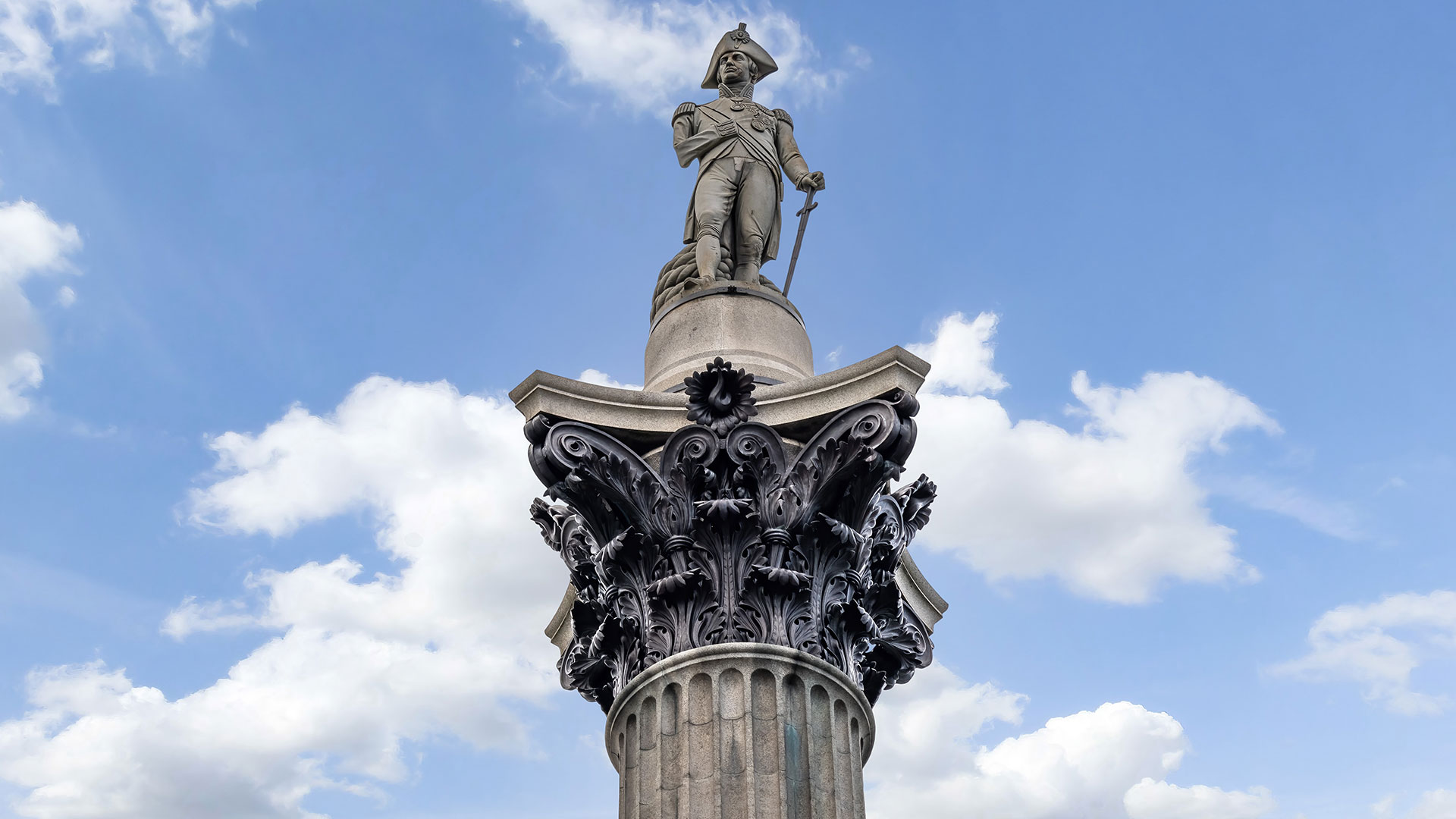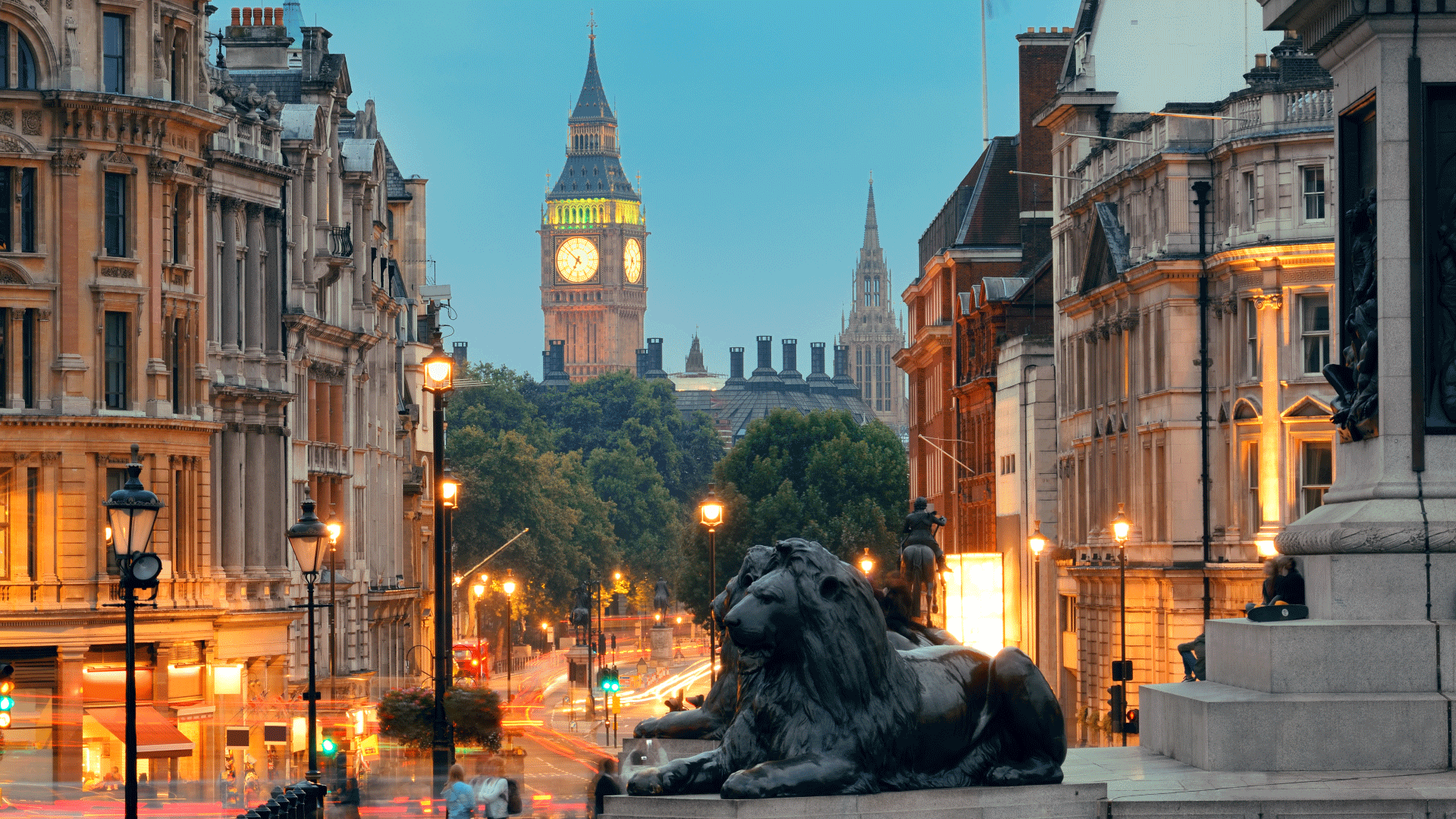If you find yourself strolling through Trafalgar Square in central London, I would recommend looking up. Standing tall in front of the National Gallery is Nelson’s Column, a tribute to one of Britain’s greatest naval heroes, Vice-Admiral Horatio Nelson (1758-1805).
If you’re planning a trip to London, don’t miss this must-see monument, which is just moments away from Buckingham Palace, the Houses of Parliament and the city's vibrant theatre district in London's West End..
Whether you're a British history enthusiast or just someone who loves uncovering the secrets behind iconic London landmarks, these fascinating facts will offer fresh insight into one of the city’s tallest and most enduring stone monuments.
Why is Nelson's Column so tall?

Vice-Admiral Lord Nelson is one of Britain’s most celebrated naval commanders. His bold tactics, innovative strategies, and leadership firmly established Britain’s naval dominance and made him a national hero.
His key victories include the Battle of the Nile (1798), the Battle of Copenhagen (1801), and the Battle of Trafalgar (1805), where he led the British Navy to a decisive victory during the Napoleonic Wars against French and Spanish fleets. It was after the victorious Battle of Trafalgar that he tragically lost his life aboard HMS Victory, having been fatally shot by an enemy sniper.
Following Admiral Nelson’s death and burial at St. Paul’s Cathedral, the nation mourned. Trafalgar Square - named after his greatest victory, was chosen as the site for Nelson’s Column. As a major public space in central London, it was an ideal location for a national monument built to honour him. Its visibility and accessibility ensure that Nelson’s legacy is seen and remembered by millions.
At 169-feet (51.5 metres), the column towers over Trafalgar Square. Its height reflects the magnitude and significance of Admiral Lord Nelson’s heroic achievements and ensures that this prominent London landmark is visible from a distance.
What is the story behind Nelson's Column?

Nelson’s Column was designed by an architect named William Railton. He entered a public competition to design it and won twice. The first time he was chosen, some people disagreed with the decision, so the competition was held again. He entered again and won again!
A feat of engineering at the time, the monument was constructed as a central feature of Trafalgar Square between 1840 and 1843, decades after Nelson’s death. Its historical significance makes it one of the key attractions to see in London.
What is on top of Nelson's Column?
Nelson's Column features an 18-foot (5.5 metre) statue of Lord Nelson at the top, it symbolises British resilience, maritime power, and the enduring impact of one man’s courage and leadership. The statue was carved from rare Craigleith sandstone by sculptor Edward Hodges Bailey and the column is made from Dartmoor Granite.
What is Nelson's Column looking at today?
The statue of Nelson at the top is facing south, gazing towards the Admiralty building in Whitehall, the historic headquarters of the Royal Navy, and the Houses of Parliament, reflecting his lifelong service to the nation, his connection to the British government and military leadership. The statue's southward orientation is also symbolic of his greatest triumph at Cape Trafalgar in Spain.
What is Nelson holding in his hand on Nelson's Column?
Nelson’s statue stands in a commanding pose, dressed in full 18th-century naval uniform, with a sword held firmly in his left hand. The sleeve of his amputated right arm is neatly tucked into the lapel of his coat, a subtle nod to his wartime injury.
Why are there four lions around Nelson's Column in Trafalgar Square?

Lions are traditional symbols of courage, strength, and guardianship, and by placing them at the base of the column reinforces the idea that Nelson’s legacy is being protected and honoured. The four bronze lions guarding the base of Nelson’s Column were sculpted by Sir Edwin Landseer and added in 1867, more than 20 years after the monument was completed.
Sir Edwin Landseer, famed for his animal paintings, had never sculpted before taking on the lions of Nelson’s Column. To study their anatomy, he examined a dead lion from London Zoo which had started to decompose. Undeterred, he used his own dog’s paws as inspiration for the lions’ feet. Each lion is subtly unique, with slight differences in their facial features and expressions. They have become iconic and are a favourite photo spot for visitors.
Along with the lions, the base of Nelson’s Column is adorned with bronze sculptured carvings depicting Nelson’s major battles and his death at Trafalgar. Interestingly, these were cast from captured enemy cannons, melted down and repurposed to celebrate their defeat. Each bronze panel capturing the dramatic scenes in maritime history was crafted by different artists - Musgrave Watson, William F. Woodington, John Ternouth, and John Edward Carew.
Fun facts about Nelson’s Column you probably didn’t know
- Nelson’s Column was funded through public donations and international contributions, including a significant sum from the Russian Tsar Nicolas I.
- The total cost of the monument was around £47,000 at the time, which would be more than £5 million today.
- Hidden inside Nelson’s Column is a tight spiral staircase of 311 steps, winding its way up to a small viewing platform just beneath the statue’s feet. This lofty perch is off-limits to the public, reserved only for maintenance crews and the occasional special-access event.
- On 23 October 1843, just before Nelson’s statue was hoisted into place, a group of 14 men including stonemasons and dignitaries, scaled the scaffolding to the top of the column for a truly unforgettable meal. With steak and champagne hauled up by pulley, they enjoyed their feast while perched high above London. At the time, it was one of the tallest structures in the city, turning their dinner into both a daring stunt and a celebratory toast to the monument’s completion.
- Despite its age, the column has withstood the test of time and even nature. In 1896, it was struck by lightning, with Nelson’s statue sustaining only a minor chip on the left shoulder. Ironically, he had already lost the use of his right arm in real life, so this sparked jokes that he might lose the other one too.
- During World War II, Adolf Hitler planned to relocate Nelson’s Column to Berlin had Germany succeeded in invading Britain, highlighting its symbolic importance.
- It's located a short distance from Britain's smallest police station in the south-east corner of Trafalgar Square. It was built in 1926 to discreetly monitor protests and is hidden inside a lamppost with space for just one officer or two prisoners at most.
- Nelson's Column underwent restoration and refurbishment work in 2006, at a cost of £420,000.
Nelson’s Column is not just a monument, it is a towering tale of bravery, legacy, and national pride, etched in stone and cast in bronze. From the daring victories it commemorates to the quirky stories hidden in its details, it stands as a reminder of Britain’s history and maritime past.
Discover more facts about London.

